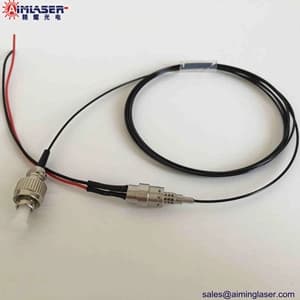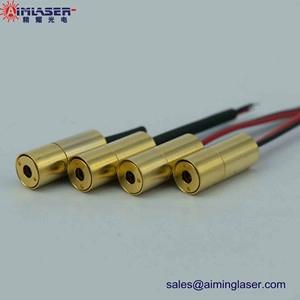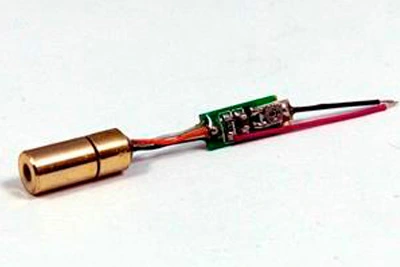Fiber laser technology shows broad application prospects and great technical advantages in high-speed and large-capacity wavelength division multiplexing fiber communication system, high-precision fiber sensing technology and high-power laser. The research of optical fiber technology has been paid more and more attention by all countries in the world, and its application field has rapidly expanded from the most mature optical fiber communication network to other wider laser application fields.

Types of optical fibers used in fiber lasers can be divided into several categories:
Crystal fiber lasers – The working material is laser crystal fiber, such as ruby single crystal fiber laser and Nd³⁺:YAG single crystal fiber laser.
Nonlinear optical fiber lasers – These mainly include stimulated Raman scattering fiber lasers and stimulated Brillouin scattering fiber lasers.
Rare earth doped fiber lasers – The fiber matrix is glass, and rare earth ions are doped into the fiber to achieve laser activity.
Plastic fiber lasers – These are made by doping laser dye into the core or cladding of plastic optical fibers.
In many of these systems, fiber coupled laser diode modules are commonly used as pump sources due to their high efficiency, compact size, and excellent beam delivery capabilities.
The structure of fiber laser is the same as that of traditional solid and gas lasers. Optical fiber is basically composed of three basic elements: pump source, gain medium and resonant cavity. Generally, high-power semiconductor laser (LD) is used as the pump source, and the gain medium is rare earth doped fiber or ordinary nonlinear fiber. The resonant cavity can be composed of optical feedback elements such as fiber grating, or various ring resonant cavities. The pump light is coupled into the gain fiber through an appropriate optical system. After absorbing the pump light, the gain fiber forms a particle number inversion or nonlinear gain, and the spontaneous emission light generated by spontaneous emission is subjected to stimulated amplification and mode selection of the resonant cavity, and finally a stable laser output is formed.
As the representative of the third generation laser technology, optical fiber has the following advantages: First, the advantages of miniaturization and intensification brought by the low manufacturing cost, mature technology and the flexibility of glass fiber; Secondly, the glass fiber doesn't need the strict phase matching of the incident pump light like crystal, which is due to the wide absorption band caused by the uneven broadening caused by the Stark splitting of the glass substrate. Third, the glass material has extremely low volume-area ratio, fast heat dissipation and low loss, so the conversion efficiency is high and the laser threshold is low. Fourth, there are many output laser wavelengths: this is because the energy levels of rare earth ions are very rich and there are many kinds of rare earth ions; Fifth, tunability: due to the wide energy level of rare earth ions and the wide fluorescence spectrum of glass fiber. Sixth, because there is no optical lens in the resonant cavity of the fiber laser, it has the advantages of adjustment-free, maintenance-free and high stability, which is unmatched by traditional lasers. Seventh, the optical fiber is exported, so that the laser can easily be competent for various multi-dimensional and arbitrary space processing applications, and the design of the mechanical system becomes very simple. Eighth, be competent in harsh working environment, and have high tolerance for dust, shock, impact, humidity and temperature. Ninth, there is no need for thermoelectric refrigeration and water cooling, just simple air cooling. Tenth, high electro-optic efficiency: the comprehensive electro-optic efficiency is as high as more than 20%, which greatly saves the power consumption and operation cost. Eleventh, high-power, currently commercialized fiber laser is six kilowatts.
to the wide absorption band caused by the uneven broadening caused by the Stark splitting of the glass substrate. Third, the glass material has extremely low volume-area ratio, fast heat dissipation and low loss, so the conversion efficiency is high and the laser threshold is low. Fourth, there are many output laser wavelengths: this is because the energy levels of rare earth ions are very rich and there are many kinds of rare earth ions; Fifth, tunability: due to the wide energy level of rare earth ions and the wide fluorescence spectrum of glass fiber. Sixth, because there is no optical lens in the resonant cavity of the fiber laser, it has the advantages of adjustment-free, maintenance-free and high stability, which is unmatched by traditional lasers. Seventh, the optical fiber is exported, so that the laser can easily be competent for various multi-dimensional and arbitrary space processing applications, and the design of the mechanical system becomes very simple. Eighth, be competent in harsh working environment, and have high tolerance for dust, shock, impact, humidity and temperature. Ninth, there is no need for thermoelectric refrigeration and water cooling, just simple air cooling. Tenth, high electro-optic efficiency: the comprehensive electro-optic efficiency is as high as more than 20%, which greatly saves the power consumption and operation cost. Eleventh, high-power, currently commercialized fiber laser is six kilowatts.
The development trend of fiber lasers in the future will be reflected in the following aspects: First, improving the performance of fiber lasers: for example, improving the output power and conversion efficiency, optimizing the beam quality, shortening the length of gain fiber, improving the stability of the system and making it more compact, the above objectives will be the focus of future research in the field of fiber lasers; Secondly, the development of a new type of fiber laser: In the time domain, the ultrashort pulse mode-locked fiber laser with smaller duty cycle has always been a research hotspot in the laser field. High-power femtosecond pulse fiber laser has always been a long-term goal. The breakthrough in this field can not only provide an ideal light source for optical communication time division multiplexing (OTDM), but also effectively promote the development of laser processing, laser marking and laser encryption and other related industries. In frequency domain, tunable fiber laser with broadband output will become a research hotspot. It can be predicted that with the improvement of related technologies, fiber lasers will develop in a wider field, and may become a new generation of light sources to replace solid-state lasers and semiconductor lasers, forming a new industry.
